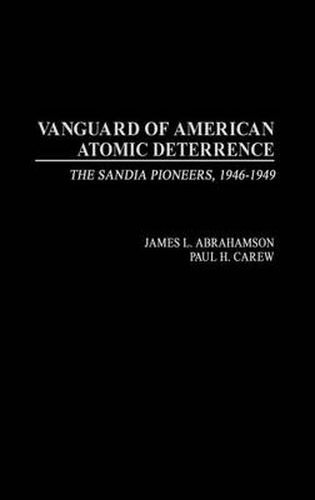Readings Newsletter
Become a Readings Member to make your shopping experience even easier.
Sign in or sign up for free!
You’re not far away from qualifying for FREE standard shipping within Australia
You’ve qualified for FREE standard shipping within Australia
The cart is loading…






In August of 1946, General Leslie Groves, Chief of the Manhattan Project, ordered 60 young officers to Sandia, New Mexico. In a project so wrapped in secrecy that few know of it even a half-century later, Groves charged them to learn how to assemble the early and highly complex atomic bombs. With that goal accomplished, they established a school to train additional assembly teams and the weaponeers and bomb commanders needed for the services’ atomic-capable aircraft. Although the wartime atomic scientists believed such tasks lay beyond the ken of military personnel, the Sandia Pioneers soon maintained even the bombs’ fissionable cores and assisted the Atomic Energy Commission scientists and technicians in their pursuit of improved bomb designs. The secret history of the young officers who replaced the scientists that had assembled the first atomic bombs, proving that the military was capable of building and maintaining the atomic stockpile, is told here.
Possessed of a very special skill, the Pioneers also contributed to the construction and assembly facilities aboard aircraft carriers and at airbases in the United States and England. With the AEC lacking enough technicians to conduct the 1948 atomic tests at Eniwetok, Groves sent many of the Pioneers to assist scientists testing improvements in the design of bombs’ fissionable cores. Those tests demonstrated that the new designs increased the bombs’ yield while making better use of scarce plutonium, thereby permitting a dramatic increase in the size of the atomic stockpile.
$9.00 standard shipping within Australia
FREE standard shipping within Australia for orders over $100.00
Express & International shipping calculated at checkout
In August of 1946, General Leslie Groves, Chief of the Manhattan Project, ordered 60 young officers to Sandia, New Mexico. In a project so wrapped in secrecy that few know of it even a half-century later, Groves charged them to learn how to assemble the early and highly complex atomic bombs. With that goal accomplished, they established a school to train additional assembly teams and the weaponeers and bomb commanders needed for the services’ atomic-capable aircraft. Although the wartime atomic scientists believed such tasks lay beyond the ken of military personnel, the Sandia Pioneers soon maintained even the bombs’ fissionable cores and assisted the Atomic Energy Commission scientists and technicians in their pursuit of improved bomb designs. The secret history of the young officers who replaced the scientists that had assembled the first atomic bombs, proving that the military was capable of building and maintaining the atomic stockpile, is told here.
Possessed of a very special skill, the Pioneers also contributed to the construction and assembly facilities aboard aircraft carriers and at airbases in the United States and England. With the AEC lacking enough technicians to conduct the 1948 atomic tests at Eniwetok, Groves sent many of the Pioneers to assist scientists testing improvements in the design of bombs’ fissionable cores. Those tests demonstrated that the new designs increased the bombs’ yield while making better use of scarce plutonium, thereby permitting a dramatic increase in the size of the atomic stockpile.